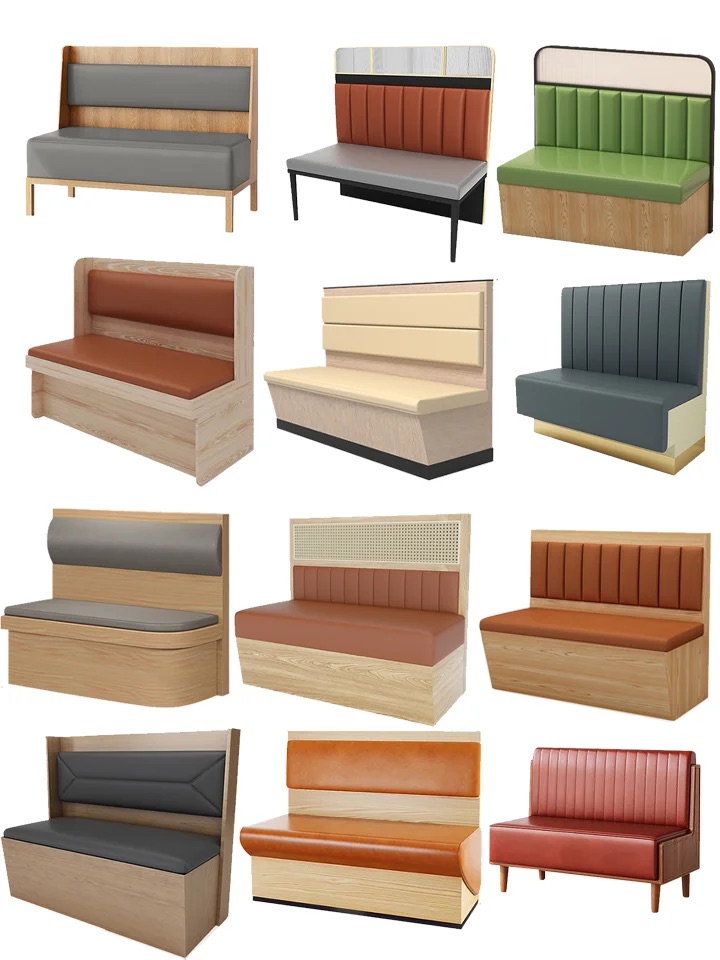Choosing between booths and freestanding tables and chairs depends on your restaurant’s space, customer experience goals, and operational needs. Here’s a breakdown of the key factors to consider:
Space Efficiency
Booths: Compact and wall-mounted, they maximize floor space by reducing aisle width and eliminating gaps between seats. Ideal for smaller restaurants looking to increase seating capacity.
Freestanding Tables & Chairs: More flexible for rearranging but require extra space for chair movement, which can reduce overall seating efficiency.
Customer Comfort & Experience
Booths: Offer padded seating, privacy, and a cozy atmosphere—perfect for couples, business meetings, or small groups.
Freestanding Tables & Chairs: Provide greater flexibility for larger parties, guests with mobility needs, or those who prefer adjustable seating.
Operations & Maintenance
Booths: Fixed in place, making them harder to clean (e.g., removing crumbs or spills from upholstery). Storage compartments under seats can also complicate maintenance.
Freestanding Tables & Chairs: Easier to move, clean, and replace if damaged—saving time and long-term costs.
Design & Aesthetics
Booths: Can be customized to match your restaurant’s theme (e.g., leather for upscale steakhouses, fabric for cafés) and enhance ambiance.
Freestanding Tables & Chairs: Offer endless style options—rustic wood for bistros, sleek metal for modern spaces—allowing for greater design versatility.
Cost Considerations
Booths: Typically more expensive due to materials and construction; repairs can also be costly.
Freestanding Tables & Chairs: Wide price range with budget-friendly options; individual replacements are cheaper.
Final Tip: Mix both! Many restaurants use booths along walls and freestanding tables in the center to balance space, comfort, and flexibility.
#StoreDecoration #RestaurantBooth #RestaurantSpaceDesign #DiningTablesandChairs #RestaurantDecoration #Booth #DiningFurniture

